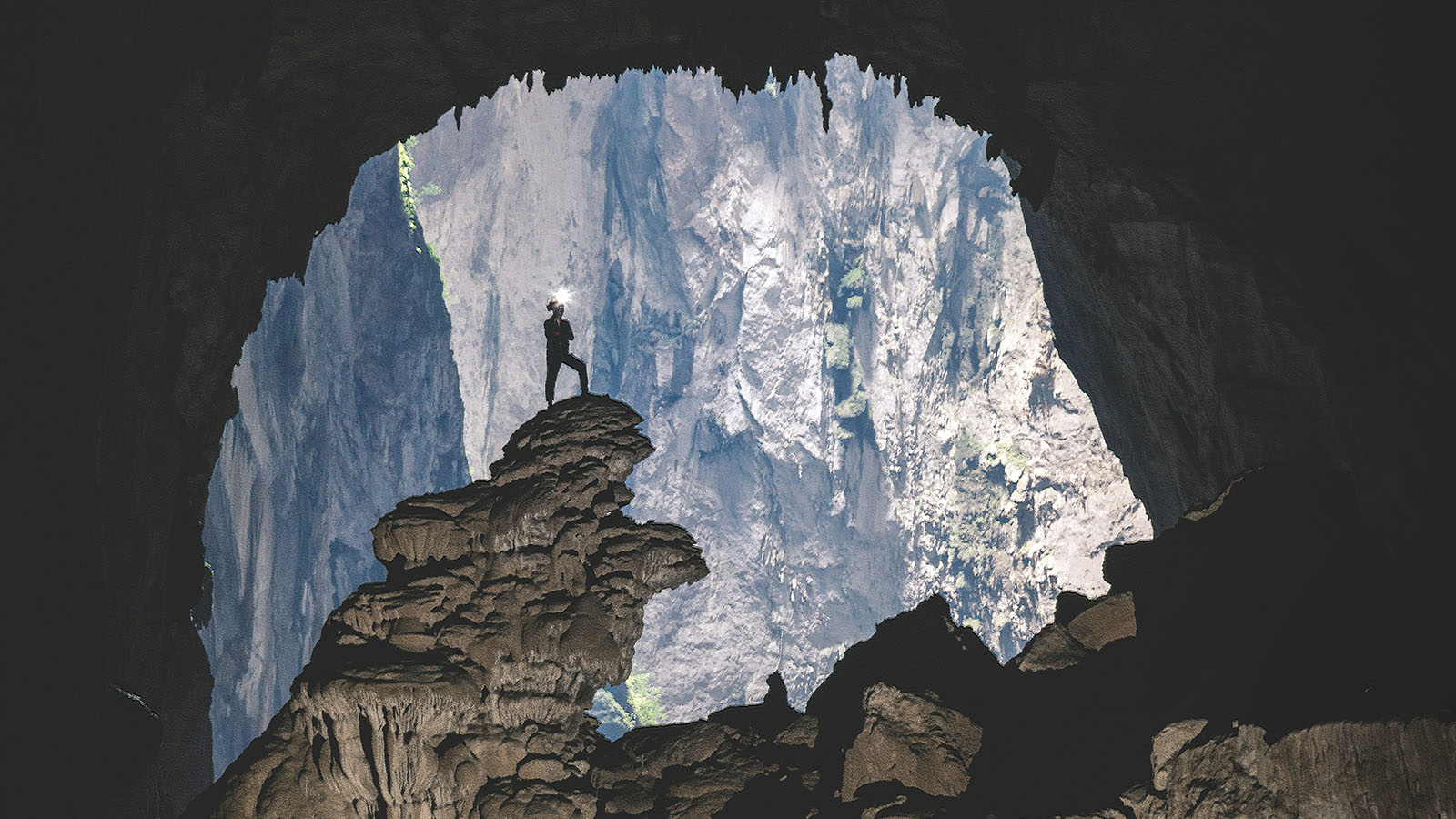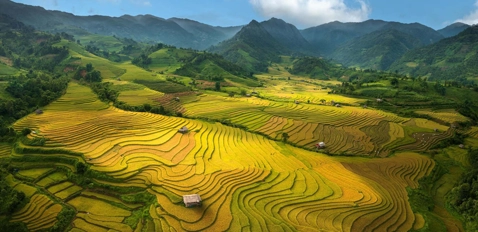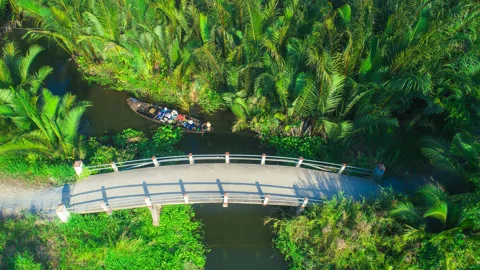Top 12 Most Sacred Temples and Pagodas In Ho Chi Minh City
Ho Chi Minh City, a bustling metropolis with a rich cultural heritage, is home to over 1,000 temples and pagodas, offering a window into Vietnam's diverse spiritual practices. While the terms "temple" and "pagoda" are often used interchangeably, they refer to different types of religious sites. Pagodas are traditionally Buddhist structures, where followers come to meditate, make offerings, and pray for peace and enlightenment. Temples, on the other hand, are often dedicated to deities from various religions, such as Taoism, Buddhism, or even folk beliefs, and serve as places of worship for a specific god or goddess.
As we were saying, we’ll only be diving into top 12 most sacred temples and pagodas in Ho Chi Minh City, each with its own unique story, architecture, and spiritual significance. Without further ado, join us as we explore these special religious sites !
#1 Jade Emperor Pagoda
The Jade Emperor Pagoda is one of top 10 most famous pagodas in Ho Chi Minh City, revered for its intricate carvings and peaceful ambiance. It’s a place of worship for both Taoists and Buddhists. So, what is the history of the Jade Emperor Pagoda?
The Jade Emperor Pagoda was built by the Cantonese Chinese community in 1909. It was dedicated to the Jade Emperor, also known as the "King of Heaven," who, in Taoist mythology, ruled over all deities and mortals. The pagoda’s significance grew over the years, and in 2016, it was even visited by former U.S. President Barack Obama.
The Jade Emperor Pagoda stands out with its bright pink facade, and intricate architectural details, combining Chinese and Vietnamese design elements. The interior is dimly lit by lanterns, creating a mystical atmosphere. It covers an area of 2,300 m², and is composed of three main areas: the main temple hall, dedicated to Buddha and the Jade Emperor; on the left, the altar of Kim Thoa Thanh Mau, the goddess of fertility, along with 12 guardian goddesses of birth.
Address: 73 Mai Thi Luu, Da Kao, District 1, Ho Chi Minh City.
Opening Hours: Open daily from 7:00 AM to 6:00 PM.
#2 Thien Hau Temple
Thien Hau Pagoda is one of top 10 oldest temples in Ho Chi Minh City, dedicated to Thiên Hậu, the Lady of the Sea. Located in District 5's Chinatown (Chợ Lớn), it is a spiritual hub for the local Chinese community and visitors seeking blessings for safe travels, particularly by sea.
The pagoda was originally built in 1760 by the Cantonese community. Over the centuries, it has undergone several restorations to maintain its grandeur, but it still retains its ancient charm.
The architecture of Thien Hau Pagoda is a fascinating blend of traditional Chinese temple designs with elements of Vietnamese craftsmanship. The temple has an unassuming exterior but reveals intricate wood and porcelain carvings as you enter. Inside the temple, the ceiling is adorned with incense coils, adding to the mystical atmosphere. There are altars to Thiên Hậu, along with other deities like the God of Wealth and the Goddess of Mercy.
Address: 710 Nguyen Trai, District 5, Ho Chi Minh City.
Opening Hours: Open daily from 6:30 AM to 4:30 PM.
#3 Giac Lam Pagoda
The Giac Lam Pagoda, built in 1744, is considered the top 10 oldest pagoda in Ho Chi Minh City. With its imposing architecture and surrounded by a beautiful garden of bonsai trees and Buddha statues, the pagoda is a true haven of peace amidst the hustle and bustle of the city. Upon entering its gates, visitors feel transported to an era of spirituality and contemplation.
The pagoda is famous for its seven-story tower, which offers panoramic views of the city, as well as its intricate wood carvings and architectural details that celebrate the history of Buddhism in Vietnam. Inside, the main hall houses statues of Buddha and Bodhisattvas, where monks and devotees perform daily rituals of prayer and meditation.
Visitors who come to the pagoda enjoy an atmosphere of serenity, with its architecture in harmony with nature. The pagoda's moss-covered roof reflects a simplicity that contrasts with the ornate styles of other pagodas. Its structure and location also follow local beliefs, as the pagoda faces south and near bodies of water, which is associated with the attraction of good fortune.
Address: 565 Lac Long Quan, Ward 10, Tan Binh District, Ho Chi Minh City
Opening Hours: Open daily from 6:30 AM to 4:30 PM.
#4 Vinh Nghiem Pagoda
The Vinh Nghiem Pagoda is one of top 10 largest pagodas in Ho Chi Minh City. Inspired by traditional northern Vietnamese architecture with Japanese influences, the pagoda is a religious and cultural landmark in the city, attracting devotees and tourists seeking spirituality and knowledge.
One of its main features is its 7-story stone tower, which reaches 14 meters high, being the highest of its kind in Vietnam. The main tower is dedicated to the Bodhisattva Ksitigarbha, known for his compassion for the beings of hell. The interior of the pagoda is vast and filled with light, with statues of Buddha and meditating monks. During Buddhist celebrations such as Vesak, the pagoda is filled with worshippers, lotus flowers, and incense, creating an atmosphere of deep devotion.
This pagoda was built between 1964 and 1971 according to the designs of architect Nguyen Ba Lang. The Vinh Nghiem Pagoda has great historical significance, as the last battle of the national hero Nguyen Van Troi was fought in 1964 in front of this pagoda.
Address: 339 Nam Ky Khoi Nghia, Ward 7, District 3, Ho Chi Minh City.
Opening Hours: 8:00 AM - 6:00 PM
#5 Cao Dai Temple
Cao Dai Temple, also known as the Holy See of the Cao Dai religion, is one of the most striking and unique temples in Vietnam. It is the main religious site for Cao Dai followers, a syncretic religion combining elements of Buddhism, Taoism, Confucianism, Christianity, and Islam. Visitors come to witness its colorful architecture and the daily ceremonies held by Cao Dai priests.
The temple was constructed between 1933 and 1955. It serves as the center of the Cao Dai faith, which was founded in the early 20th century in southern Vietnam.
The architecture of Cao Dai Temple is incredibly vibrant and eclectic, symbolizing the blend of various religions. The building's façade features vivid colors, with elements like dragons, lotuses, and the famous Divine Eye symbol, representing God. Inside, the long main hall is lined with pillars wrapped in golden dragons, and the ceiling is painted to resemble the sky, complete with clouds.
Address: Pham Ho Phap, Hoa Thanh, Tay Ninh, (90 km from Ho Chi Minh City)
Opening Hours: Open daily from 7:00 AM to 5:00 PM, but the best time to visit is during one of the four daily ceremonies at 6:00 AM, noon, 6:00 PM, or midnight.
#6 Hoang Phap Pagoda
The Hoang Phap Pagoda, located in Ho Chi Minh City's Hoc Mon district, is more than half a century old. Throughout its history, it has undergone several renovations, allowing it to expand its area and offer a green space with trees that provide shade all year round. Located about 30 km from the city center, Hoang Phap Pagoda is famous for its spiritual retreats and meditation courses for those seeking a deeper connection with Buddhism. This vast complex is surrounded by serene gardens and tranquil lakes, providing a perfect setting for contemplation and religious practices.
This pagoda is well known among Buddhists, who come to visit it and participate in the spiritual retreats it organizes. Especially famous is the summer retreat, which attracts thousands of people. The pagoda offers a healthy spiritual environment that helps people balance their material and spiritual lives.
Address: 96 Tan Thoi village 3, Tan Hiep, Hoc Mon, Ho Chi Minh City
Opening hours: 5:00 AM - 10:00 PM
#7 Buu Long Pagoda
Located on a hill on the west bank of the Dong Nai River, the Buu Long Pagoda is located approximately 20 km from the center of Ho Chi Minh City. Recently, this pagoda was listed among the 10 most beautiful pagodas in the world due to its impressive architectural design.
Founded in 1942, the pagoda was renovated and expanded in 2007, becoming a work that harmoniously combines Nguyen dynasty architecture and Southeast Asian cultural elements.
This pagoda has a unique architecture, reminiscent of that of Thai pagodas. However, the Vietnamese architectural essence is present in every detail, from the delicate carvings to the imposing dragon statues. It is also the largest non-incense pagoda in Ho Chi Minh City. The monks who reside there are friendly and often interact with visitors, sharing their spiritual wisdom.
Buu Long offers a refreshing break from the frenetic pace of Ho Chi Minh City, providing a deep connection to inner peace. For those seeking an authentic meditation experience and stunning architecture, this is the place to be.
Address: 81 Nguyen Xien, Long Binh, District 9, Ho Chi Minh City
Opening hours: 9:00 AM - 9:00 PM
#8 Mariamman Hindu Temple
Amidst the urban chaos of Ho Chi Minh City, the Mariamman Hindu Temple stands out as a colorful and vibrant jewel of Indian devotion. Built in the 19th century, this is the only active Hindu temple in Ho Chi Minh City, dedicated to the goddess Mariamman, known for her blessings of fertility, health, and prosperity.
The temple's façade is impressive, with a gopuram tower full of sculptures of gods and mythical creatures, each more detailed than the last. Upon entering, you will be greeted by an atmosphere of pure devotion, where the sound of mantras and the scent of incense transport visitors to a unique spiritual dimension. Inside, statues of the goddess Mariamman and other Hindu deities are carefully adorned with fresh flowers and colorful offerings.
The Mariamman Temple attracts not only the Hindu community but also many local Vietnamese people who believe in the power of its blessings. This fascinating meeting point between cultures makes this temple one of the most visited in the city, a symbol of Ho Chi Minh's spiritual multiculturalism.
Address: 45 Truong Dinh, Ben Thanh, District 9, Ho Chi Minh City
Opening hours: 7:00 AM - 7:00 PM
#9 Ong Pagoda
Ong Pagoda, also known as Quan De Temple, is a vibrant Taoist temple in Ho Chi Minh City, dedicated to Quan Cong, the deified general from the Three Kingdoms period. It is a significant place of worship for the local Chinese-Vietnamese community, where prayers are made for protection, success, and good fortune in business.
Ong Pagoda was built in 1902 by the Cantonese Chinese community in Chinatown. Over the years, it has become a well-preserved symbol of the Chinese heritage in Vietnam.
The architecture of Ong Pagoda is a splendid reflection of traditional Chinese design, with vibrant red and gold as dominant colors. The pagoda’s entrance is flanked by stone lions symbolizing strength and protection. Inside, the walls are adorned with Chinese calligraphy, and the air is filled with the scent of incense spirals hanging from the ceiling. The temple’s central altar features a statue of Quan Cong, surrounded by other Taoist deities. The bold red pillars and elaborate roof with its carved dragons and phoenixes create a visually captivating atmosphere.
Address: 678 Nguyen Trai, Ward 11, District 5, Ho Chi Minh City
Opening Hours: Open daily from 6:00 AM to 5:30 PM.
#10 Xa Loi Pagoda
The Xa Loi Pagoda is one of the most popular pagodas Ho Chi Minh City. Although it has a modern design, it retains a strong link to traditional culture, standing out as an important symbol of the struggle of Buddhism against religious repression under the regime of Ngo Dinh Diem.
The pagoda was begun on August 5, 1956, on a 2,500 m² plot of land symbolically donated by the Indochinese Club in exchange for a single Vietnamese coin. Its purpose was to house Buddha relics and to become the official headquarters of the South Vietnam Buddhist Association. Since its construction, the pagoda has been renovated only once, between 1999 and 2001, preserving its original architecture.
It is considered the first multi-story pagoda in Saigon, marking a new era in Buddhist architecture in the country. It includes a seven-story bell tower, a main hall, a library, and more.
Address: 89 Ba Huyen Thanh Than Quan, Ward 7, District 3, Ho Chi Minh City
Opening hours: 6:00 AM - 11:30 AM; 2:00 PM - 9:00 PM
#11 Phu Chau Floating Temple
Phu Chau Floating Temple is a hidden gem in Ho Chi Minh City, uniquely situated on a small island in the middle of the Vam Thuat River. It is dedicated to Mazu, the Chinese sea goddess, and serves as a place of worship for sailors, fishermen, and those seeking blessings for safety and prosperity.
The exact date of the temple’s construction is unclear, but it is believed to have been built over 300 years ago in the 18th century by local fishermen. Over time, the temple has undergone several renovations, while maintaining its spiritual significance.
Phu Chau Temple boasts stunning traditional Chinese architecture with intricate ceramic carvings and vibrant colors. The temple is decorated with statues of dragons, phoenixes, and other mythological creatures. The temple’s serene setting on the river enhances its mystical appeal, and visitors must take a boat to reach it, adding to its unique charm. The interior of the temple features shrines dedicated to various deities, including Mazu and the Buddha.
Address: Ward 5, Go Vap District, Ho Chi Minh City
Opening Hours: Open daily from 7:00 AM to 5:00 PM.
Entrance Fee: There is no official entrance fee, but small donations are encouraged for upkeep and offerings. Boat fees to reach the temple are usually around 10,000–20,000 VND.
#12 Khanh Van Nam Vien Pagoda
Located in an alley on Nguyen Thi Nho Street (District 11), Khanh Van Nam Vien originates from Nam Hai County, Guangdong Province, China, and was introduced to Saigon-Cholon in 1936. It has since grown to more than 2,000 followers. This is one of the largest Taoist temples in southern Vietnam, embodying the synthesis of the "Three Teachings": Confucianism, Buddhism, and Taoism. The temple's architecture retains its traditional features, including a courtyard, a two-story front, and a main hall. The main hall’s central shrine is dedicated to Laozi, the semi-legendary ancient Chinese philosopher, and the founder of Taoism. The courtyard is decorated with greenery, harmonizing with the historic site's landscape. The Taoist influence is clearly reflected through the Bagua symbols on the altars.
The temple's library houses a variety of Taoist scriptures written in Chinese. These texts primarily focus on teaching moral conduct, Taoist principles, and meditation practices. Not just a religious site, Khanh Van Nam Vien also operates a home for the elderly and a free clinic that offers acupuncture and herbal treatments.
Address: 269/2 Nguyen Thi Nho, Ward 16, District 11, Ho Chi Minh City
Opening Hours: Open daily from 4:00 AM to 5:00 PM.
Entrance Fee: There is no official entrance fee, but small donations to the monks are encouraged.
Top 10 most sacred temples and pagodas in Ho Chi Minh City offer a peaceful retreat amidst the urban chaos, giving visitors a chance to experience the city's spiritual depth. Whether you’re seeking blessings, admiring architectural beauty, or simply enjoying the tranquility, these sacred sites provide a memorable journey into Vietnam’s cultural and religious heart. If you’re inspired to explore further, check out more of our articles or book a tour with Vietnam Original Travel to discover these magnificent spiritual landmarks firsthand!
>>> What To Do In 4 Days In Ho Chi Minh City?
>>> How to get to Ho Chi Minh City from Hanoi, Hue, and Hoi An
Send us your comments about : Top 12 Most Sacred Temples and Pagodas In Ho Chi Minh City
Required fields *
You might also be interested
Travel ideas
Need some inspiration? Discover some of the best tours in Vietnam, which are highly appreciated by our clients. An excellent starting point to help you choose the right trip to Vietnam, Laos, Cambodia, Burma or Thailand, whether you are traveling alone, as a couple, as a family or with friends.
And because this trip is yours, feel free to customize it as you wish!
Vietnam Cambodia Itinerary 14 Days
Hanoi – Hoa Binh – Mai Chau – Ninh Binh – Halong bay – Hue - Danang – Hoian – Saigon – Ben Tre - Can Tho – Saigon - Siem Reap Angkor - Tonlé Sap - Siem Reap – Ta Prohm - Departure
Vietnam 14 Day Itinerary
Vietnam 14-day itinerary covers the country’s top highlights and quintessential experiences for an unforgettable journey.
Honeymoon Tour Pakcages In Vietnam 12 Days
Saigon Arrival - City Tour – Mekong Delta – Danang – Hoian - by flight - Da Nang – Hanoi - by flight – Halong - overnight on junk – Departure
Authentic Hoang Su Phi Trekking Tours
Hoang Su Phi trekking tours take you to stunning terraces, meet few tourists, connect with locals and enjoy authentic culture.
Best Nha Trang Beach Tour 4 Days
Saigon/Hanoi – Nha Trang relaxation – Saigon/Hanoi – Departure
Mekong Delta Bike Tour Itinerary 7 Days
Cycle through the Mekong Delta in 7 days, discovering floating markets, orchards, craft villages, and tranquil green islands.
Are you interested in this tour?

































Comment